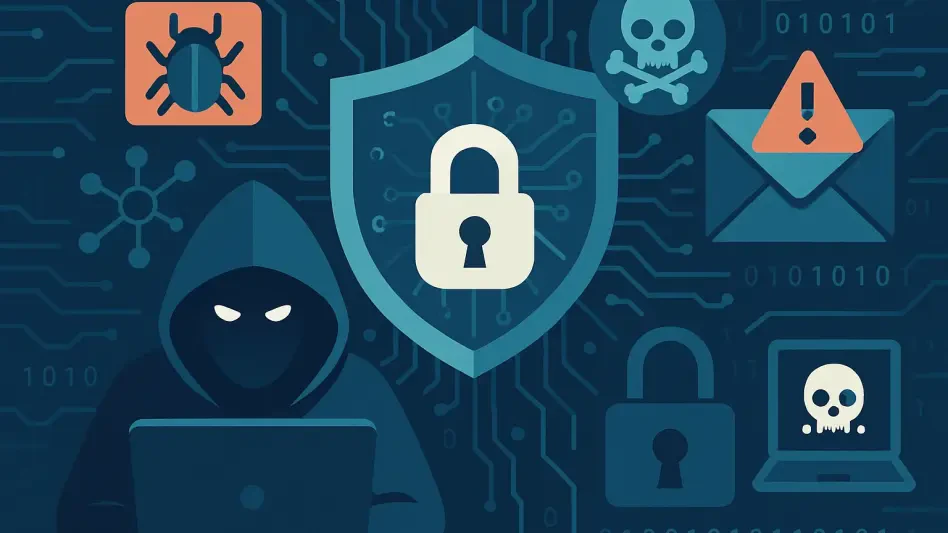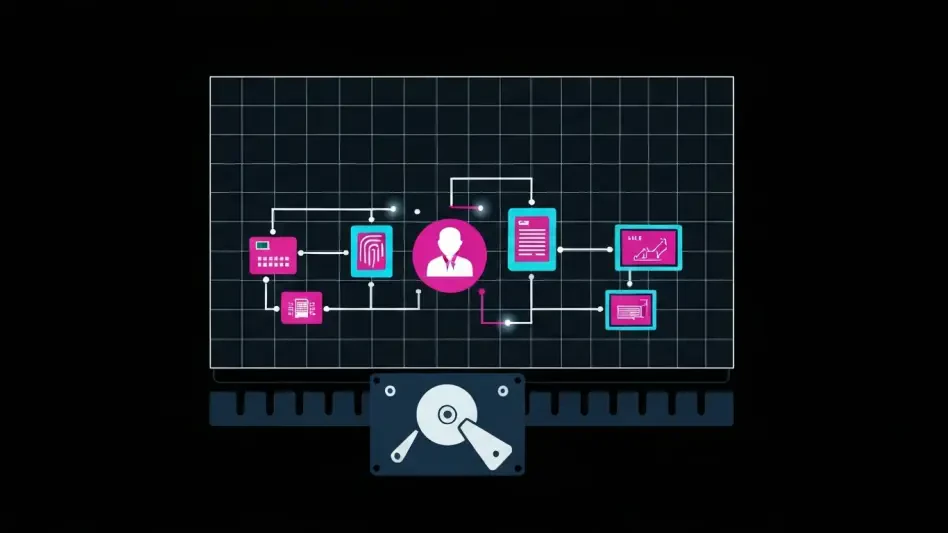In the rapidly shifting digital landscape of today, where cyber threats have escalated in both sophistication and frequency, organizations across industries face unprecedented challenges in safeguarding their critical data and infrastructure from malicious actors. Businesses, governments, and institutions alike grapple with attacks that are not only more complex but also capable of inflicting severe financial and reputational damage. End-to-end threat intelligence platforms have become indispensable in this high-stakes environment, equipping security teams with real-time insights, predictive analytics, and automated response mechanisms to counter threats before they spiral into crises. These tools represent a lifeline for staying ahead of adversaries who continuously adapt their tactics. Highlighting the forefront of this field, a detailed evaluation of leading companies showcases the innovators driving cybersecurity forward. Firms such as Mandiant, CrowdStrike, and IBM Security, among others, have been assessed based on their threat detection prowess, scalability, and integration capabilities. The aim is to provide decision-makers with a clear understanding of how these industry leaders address diverse security needs, from small enterprises to global corporations, ensuring that actionable solutions are within reach for tackling the ever-evolving cyber risks of the present day.
Emerging Trends in Threat Intelligence
Shifting to Proactive Defense Strategies
The cybersecurity domain has witnessed a marked shift toward proactive defense mechanisms, emphasizing the anticipation of threats rather than merely reacting to them after the fact. This trend underscores a fundamental change in how organizations approach risk management, leveraging vast datasets and cutting-edge analytics to predict potential vulnerabilities and attack vectors. Platforms now prioritize forecasting capabilities, drawing on global threat feeds and historical patterns to identify risks before they materialize into full-blown incidents. This predictive focus enables security teams to allocate resources more effectively, fortifying defenses where they are most needed and reducing the likelihood of breaches. By staying ahead of adversaries, companies can minimize downtime and protect sensitive information, a critical advantage in an era where data breaches can have catastrophic consequences. The industry’s commitment to this forward-thinking approach is evident across leading firms, which have embedded advanced algorithms into their solutions to enhance foresight and resilience.
Moreover, the adoption of proactive strategies is not just about technology but also about cultivating a mindset of continuous improvement within security operations. Organizations are encouraged to regularly update their threat models and incorporate emerging intelligence to address new attack methodologies. This dynamic process ensures that defenses remain robust against sophisticated threats, such as ransomware campaigns or nation-state-sponsored attacks, which often exploit overlooked gaps. Collaboration between threat intelligence providers and their clients plays a pivotal role here, fostering an environment where shared insights lead to stronger collective security. As attackers grow more inventive, this emphasis on anticipation over reaction has become a cornerstone of modern cybersecurity frameworks, shaping how businesses prioritize their investments and training programs to build a more secure digital ecosystem.
Convergence of Unified Security Ecosystems
Another defining trend in the cybersecurity landscape is the move toward unified security ecosystems that consolidate multiple functions into a single, cohesive platform, significantly reducing operational complexity. This convergence integrates threat intelligence with complementary tools like endpoint protection, firewalls, and automated response systems. Such comprehensive solutions streamline workflows for security teams, eliminating the inefficiencies of managing disparate tools that often fail to communicate effectively. The result is a more agile defense posture, capable of addressing threats across various layers of an organization’s infrastructure, from on-premise servers to cloud environments. Leading companies have embraced this model, recognizing that a fragmented security approach can leave critical blind spots for attackers to exploit, thereby increasing the risk of successful breaches.
This trend also reflects the growing demand for simplicity in an increasingly intricate digital world, where organizations juggle hybrid setups and multi-cloud deployments. Unified platforms provide centralized visibility, allowing security personnel to monitor and respond to incidents from a single interface, which saves time and reduces the likelihood of human error. Additionally, these ecosystems often come with built-in scalability, ensuring they can grow alongside an organization’s evolving needs without requiring costly overhauls. The focus on integration extends to compatibility with existing systems like Security Information and Event Management (SIEM) and Security Orchestration, Automation, and Response (SOAR), creating seamless interactions that enhance overall efficiency. As this trend gains momentum, it signals a broader industry push toward holistic solutions that prioritize both effectiveness and ease of use in combating cyber threats.
Core Features of Leading Threat Intelligence Platforms
Harnessing AI and Automation for Smarter Defense
At the heart of today’s most effective threat intelligence platforms lies the integration of Artificial Intelligence (AI) and Machine Learning (ML), technologies that have revolutionized how threats are detected and mitigated. These tools enable predictive analytics, allowing systems to identify patterns and anomalies that might indicate an impending attack, often before human analysts would notice them. Automation further enhances this capability by executing rapid responses to identified threats, such as isolating compromised devices or blocking malicious traffic, without requiring manual intervention. This speed is crucial in limiting the damage caused by fast-moving threats like zero-day exploits or ransomware. By reducing the burden of repetitive tasks on security teams, AI-driven automation frees up personnel to focus on strategic decision-making and complex incident investigations, thereby improving overall organizational resilience.
Beyond immediate response, the continuous learning aspect of AI ensures that platforms evolve alongside emerging threats, adapting to new attack techniques through iterative analysis of vast data sets. This adaptability is complemented by the ability to process information in real time, delivering actionable insights that keep pace with the dynamic nature of cyber risks. Companies leveraging these technologies set a high standard for efficiency, ensuring that even organizations with limited in-house expertise can benefit from sophisticated defenses. However, while automation handles volume and velocity, it is often paired with oversight from skilled analysts to ensure accuracy and context in nuanced scenarios. This synergy between technology and human judgment forms a robust foundation for modern threat intelligence, addressing both current and future challenges in the cybersecurity arena.
Scalability and Seamless Integration Capabilities
Scalability remains a non-negotiable feature for threat intelligence platforms, as organizations increasingly operate across diverse environments that include hybrid, multi-cloud, and on-premise setups. The ability to expand or contract resources based on demand ensures that security solutions remain effective regardless of an organization’s size or infrastructure complexity. This flexibility is particularly vital for businesses experiencing rapid growth or seasonal fluctuations, allowing them to maintain robust protection without overinvesting in unnecessary capacity. Leading platforms are designed with this adaptability in mind, offering cloud-native architectures that minimize system overhead while providing comprehensive coverage across all digital touchpoints, from endpoints to remote networks.
Equally critical is the integration of these platforms with existing security tools, such as SIEM and SOAR systems, which are staples in many security operations centers (SOCs). Seamless compatibility ensures that threat intelligence feeds directly into broader workflows, creating a unified front against cyber threats without introducing silos or bottlenecks. This interconnectedness allows for centralized monitoring and faster correlation of data, enabling teams to respond to incidents with greater precision. For organizations with legacy systems, the ability to incorporate new solutions without disrupting current operations is a significant advantage, reducing both cost and implementation time. As digital environments continue to diversify, the emphasis on scalability and integration reflects an industry-wide recognition that adaptable, cohesive tools are essential for maintaining a strong security posture.
Global Threat Visibility for Comprehensive Protection
The importance of global threat visibility cannot be overstated in an era where cyber attacks often transcend borders, involving sophisticated actors like nation-state groups or dark web syndicates. Top-tier platforms provide access to extensive datasets and worldwide telemetry, offering insights into attack trends that span regions and industries. This broad perspective is invaluable for organizations with international operations or those facing adversaries who leverage global networks to obscure their activities. By mapping out threats on a macro scale, from emerging malware strains to coordinated campaigns, these solutions empower security teams to anticipate and neutralize risks that might otherwise go undetected until it’s too late.
Furthermore, global visibility extends beyond technical indicators to include contextual intelligence, such as geopolitical factors or underground market activities that could influence attack motivations. Platforms excelling in this area deliver detailed reports and real-time feeds that help organizations understand the broader landscape of cyber risks, enabling more informed strategic planning. This capability is particularly crucial for sectors like finance or critical infrastructure, where the stakes of a breach are extraordinarily high. While such extensive coverage often comes with higher costs, the value of preemptive knowledge in preventing catastrophic incidents justifies the investment for many enterprises. As threats grow more interconnected, the ability to see and act on a global scale remains a defining trait of leading threat intelligence providers.
Diversity in Solutions and Specialization
Customized Offerings for Unique Risk Profile
The diversity among threat intelligence providers manifests in their specialized approaches, ensuring that organizations with varying risk profiles can find tailored solutions to match their specific challenges. Some platforms focus on niche areas, such as monitoring external threats from the dark web or protecting against supply chain vulnerabilities, which are critical for industries like retail or manufacturing with extensive partner networks. Others offer broad, full-stack defenses that cover everything from endpoint security to cloud protection, appealing to large enterprises with complex infrastructures. This range of focus areas reflects an understanding that cyber risks are not uniform, and a one-size-fits-all model is inadequate for addressing the nuanced needs of different sectors or business sizes.
Specialization also extends to the type of intelligence provided, with certain companies emphasizing predictive insights that incorporate geopolitical context alongside technical data, ideal for government entities or multinational corporations. Meanwhile, other providers prioritize accessibility through managed services, catering to mid-sized firms that may lack the resources for an in-house security team. This customization ensures relevance, allowing businesses to invest in solutions that directly address their most pressing concerns without wasting resources on irrelevant features. As cyber threats continue to diversify, the ability of these platforms to offer targeted protection highlights a maturing market that values precision and adaptability over generic approaches.
Balancing Automation with Human-Led Analysis
Automation has become a cornerstone of threat intelligence, handling the sheer volume and speed of data that modern cyber threats generate, from triaging alerts to executing initial response actions. By automating routine tasks, platforms significantly reduce the time between detection and mitigation, a critical factor when dealing with fast-evolving attacks like phishing campaigns or malware outbreaks. This efficiency is particularly beneficial for organizations with limited staff, as it minimizes the operational burden and allows focus on higher-level strategy. Top providers have refined these automated processes to ensure reliability, using AI to prioritize threats based on severity and potential impact, thereby optimizing resource allocation in high-pressure environments.
However, while automation excels at scale, human expertise remains indispensable for interpreting complex threats that require contextual understanding or strategic foresight. Skilled analysts bring depth to investigations, especially in scenarios involving advanced persistent threats (APTs) or insider risks, where subtle indicators might evade algorithmic detection. Leading platforms strike a balance by combining automated workflows with human-led threat hunting and forensic analysis, ensuring that neither speed nor nuance is sacrificed. This dual approach allows for rapid containment of straightforward incidents while reserving expert intervention for intricate cases, creating a comprehensive defense mechanism. The synergy between technology and human judgment underscores the sophistication of current threat intelligence solutions, addressing a wide spectrum of cyber challenges effectively.
Challenges in Threat Intelligence Adoption
Navigating Cost and Accessibility Hurdles
One of the most significant barriers to adopting advanced threat intelligence platforms is the cost, which often places cutting-edge solutions out of reach for smaller organizations with constrained budgets. Many of these platforms, designed with enterprise-grade features, come with premium pricing models that reflect their extensive capabilities, such as global threat feeds or AI-driven analytics. Additionally, the need for specialized training to fully utilize these tools adds to the financial burden, as staff must be equipped to handle sophisticated interfaces and interpret complex data outputs. For small to medium-sized businesses, this creates a gap between the desire for robust protection and the practical ability to invest in it, often leaving them vulnerable to evolving threats despite the availability of powerful technology.
Despite these challenges, certain providers have recognized the need for more accessible options, offering scaled-down versions or managed services that reduce the upfront investment and operational overhead. These alternatives provide a viable entry point for organizations lacking in-house expertise, delivering expert support without the need for extensive training programs. However, even with such options, the disparity between enterprise-focused solutions and those suitable for smaller players highlights a market divide that the industry must address. Bridging this gap through innovative pricing structures or modular offerings could democratize access to high-quality threat intelligence, ensuring that protection is not solely the privilege of well-funded entities but a standard across all business scales.
Addressing Skill Gaps and Implementation Complexity
Beyond financial constraints, the complexity of implementing and managing threat intelligence platforms poses a substantial challenge, particularly for organizations without dedicated cybersecurity teams. The sophisticated nature of these tools often requires a deep understanding of both the technology and the broader threat landscape to configure systems effectively and interpret their outputs. For many businesses, especially those in non-technical sectors, the learning curve can be steep, leading to underutilization of platform capabilities or misconfigurations that undermine security efforts. This implementation hurdle is compounded by the rapid pace of digital transformation, where new systems and cloud environments must be secured without disrupting ongoing operations.
To mitigate these issues, some leading providers offer extensive support during onboarding, including detailed documentation, training sessions, and ongoing technical assistance to ensure smooth integration. Partnerships with managed security service providers (MSSPs) also help alleviate the burden by outsourcing much of the operational workload to external experts, allowing organizations to focus on core business functions. Nevertheless, the persistent shortage of skilled cybersecurity professionals globally remains a bottleneck, as demand for talent outstrips supply. Addressing this skills gap through industry-wide initiatives, such as certification programs or educational partnerships, is crucial for enabling broader adoption. Until such systemic solutions take hold, the complexity of deployment will continue to challenge many organizations striving to bolster their defenses.
Spotlight on Industry Innovators
Mandiant’s Forensic Leadership and Global Insights
Mandiant stands out for its unparalleled expertise in forensic analysis and deep insights into nation-state threats, positioning it as a go-to choice for high-security industries and government entities. Its platforms leverage AI to enhance detection capabilities while providing detailed visibility into sophisticated cyber campaigns that often evade standard defenses. This focus on advanced threat actors, combined with robust incident response services, ensures that organizations can not only detect but also thoroughly investigate breaches to prevent recurrence. While Mandiant’s offerings set a high bar for comprehensive protection, the associated costs and the need for skilled analysts to maximize its potential may limit its appeal to larger, well-resourced entities with complex security needs.
The strength of Mandiant lies in its ability to deliver actionable intelligence drawn from a global perspective, enabling clients to understand and counteract threats on a macro scale. Its research-driven approach, often uncovering previously unknown attack methodologies, provides a strategic edge for organizations facing persistent adversaries. Integration with broader security ecosystems further enhances its value, allowing seamless data sharing with existing tools to create a unified defense posture. However, for smaller businesses, the investment required might outweigh the immediate benefits, particularly if their threat landscape does not involve such high-stakes risks. Mandiant’s niche in forensic depth and elite threat intelligence makes it a leader for those prioritizing cutting-edge, specialized protection over budget considerations.
CrowdStrike’s Cloud-Native Prowess with Falcon
CrowdStrike has redefined endpoint protection through its cloud-native Falcon platform, which combines threat intelligence with lightweight deployment and extensive telemetry data for real-time defense. This innovative approach minimizes system overhead, making it an attractive option for enterprises managing sprawling digital environments without sacrificing performance. The platform’s AI-driven detection, paired with human-led threat hunting via Falcon OverWatch, ensures both speed and precision in addressing incidents, from malware outbreaks to advanced persistent threats. While CrowdStrike excels in delivering enterprise-grade security, its premium pricing structure can pose a barrier for smaller organizations seeking similar capabilities on a tighter budget.
A distinguishing factor for CrowdStrike is its focus on scalability, allowing the platform to adapt effortlessly to organizations of varying sizes and infrastructure complexities, particularly those with heavy cloud reliance. The emphasis on automated response mechanisms further reduces the time to containment, a critical advantage in fast-paced threat scenarios where every second counts. Additionally, its vast data collection capabilities provide insights into global attack trends, helping clients anticipate emerging risks before they strike. However, the full range of features often requires a level of technical expertise to implement effectively, which may necessitate additional training or external support for some users. CrowdStrike remains a top contender for those prioritizing innovative, cloud-first solutions in their cybersecurity arsenal.
Palo Alto Networks’ Holistic Security Ecosystem
Palo Alto Networks offers a comprehensive security ecosystem through its Cortex suite, integrating threat intelligence with firewalls, endpoint protection, and zero-trust principles for a full-spectrum defense. This unified approach appeals to large enterprises seeking to consolidate their security tools into a single, manageable framework, reducing complexity and enhancing visibility across all layers of their infrastructure. Backed by the Unit 42 research team, Palo Alto provides deep insights into evolving threats, ensuring that clients stay ahead of sophisticated attack vectors. However, the platform’s intricacy and associated costs can be overwhelming for smaller security teams lacking the resources to navigate or afford such an extensive system.
The strength of Palo Alto Networks lies in its commitment to a seamless, end-to-end security posture that addresses risks from network perimeters to cloud environments with equal rigor. Its focus on zero-trust architecture ensures that trust is never assumed, a critical safeguard in an era of insider threats and lateral movement by attackers. Integration capabilities allow for smooth interaction with existing systems, minimizing disruption during deployment while maximizing operational efficiency. Yet, the learning curve and resource demands of such a robust ecosystem may deter organizations without dedicated IT staff or significant budgets. Palo Alto Networks remains a powerhouse for those capable of leveraging its all-encompassing tools to build a fortified, future-ready security strategy.
Recorded Future’s Predictive Intelligence Advantage
Recorded Future distinguishes itself with a focus on predictive intelligence, blending cyber threat data with geopolitical context to offer forward-looking insights that help organizations anticipate risks. Its Intelligence Graph processes massive data points in real time, providing a comprehensive view of potential threats across the dark web, open sources, and proprietary feeds. This makes it an ideal choice for enterprises and governments needing to forecast complex risks beyond traditional technical indicators. However, fully leveraging its advanced analytical tools often requires a level of expertise that may necessitate additional training or specialized staff, posing a challenge for some adopters.
The platform’s ability to contextualize threats within broader global trends sets it apart, enabling security teams to align their defenses with not just current but also emerging dangers influenced by political or economic shifts. This predictive edge is particularly valuable for sectors like finance or critical infrastructure, where early warning can mean the difference between resilience and disaster. Recorded Future also emphasizes usability through customizable dashboards, ensuring that insights are accessible to decision-makers at various levels. Nevertheless, the depth of its offerings might be overkill for smaller businesses with simpler threat landscapes, where basic detection suffices. For those invested in long-term risk management, Recorded Future provides a unique and powerful toolset to navigate an uncertain digital future.
IBM Security’s Enterprise-Grade X-Force Solutions
IBM Security, through its X-Force division, brings decades of expertise to the table, combining predictive intelligence with ethical hacking services and seamless integration with QRadar SIEM for enterprise-scale protection. This robust offering caters to large organizations focused on compliance, resilience, and comprehensive threat management across global operations. Backed by extensive research, X-Force delivers insights into high-stakes threats, including nation-state actors, ensuring clients are prepared for the most sophisticated attacks. However, its scale and cost structure may not align with the needs or budgets of smaller entities, limiting its accessibility to well-funded enterprises.
A key advantage of IBM’s approach is the emphasis on actionable intelligence, supported by the X-Force Red team’s offensive security capabilities, which simulate real-world attacks to uncover vulnerabilities before adversaries do. This proactive testing, paired with deep integration into existing security frameworks, enhances overall defense readiness, particularly for industries under strict regulatory scrutiny. While the platform’s complexity offers unmatched depth, it can also require significant resources to deploy and manage effectively, often necessitating dedicated teams. IBM Security remains a top choice for large-scale operations prioritizing compliance and cutting-edge protection, providing a strategic foundation for navigating the intricate threat environment with confidence.
Cisco Talos and Unmatched Network Visibility
Cisco Talos leverages the vast internet traffic visibility of its parent company to deliver deep insights into malware, vulnerabilities, and attack trends, making it a strong fit for organizations within the Cisco ecosystem. Integrated with tools like Secure, it offers comprehensive security solutions for businesses seeking robust protection.








